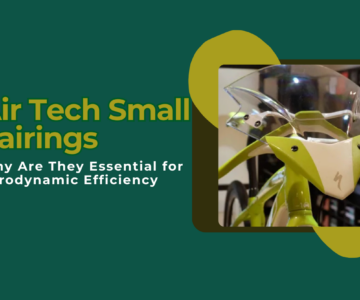 SpaceX’s Starship: The Mars-Bound Rocket Changing Space Travelby admin / November 8, 2024
SpaceX’s Starship: The Mars-Bound Rocket Changing Space Travelby admin / November 8, 20243D Explainer Videos for Startups: A Powerful Tool for Pitching Ideas
In the fast-paced world of startups, having a compelling pitch can be the key to capturing investors’ attention and winning over potential customers. One of the most powerful tools to help convey complex ideas and create a memorable impression is the 3D explainer video. Combining visual storytelling with dynamic, three-dimensional elements, 3D explainer videos offer a unique way to showcase your product, idea, or service, making it easier for audiences to understand and connect with your brand. Here’s a look at why 3D explainer videos can be transformative for startups looking to pitch their ideas effectively.
Why 3D Explainer Videos?
Traditional presentations can often struggle to communicate the full potential of an idea, especially if it’s rooted in technical, complex, or abstract concepts. 3D explainer videos bridge this gap by creating visualizations that are immersive, detailed, and easy to follow. Here’s why they stand out for startups:
- Simplifying Complex Ideas
Startups often work with new, complex technologies or innovative solutions. In a pitch setting, it can be challenging to explain these intricacies verbally. A 3D explainer video can break down these complexities into digestible visuals that anyone can understand. Whether it’s a demonstration of a software interface or a walkthrough of a product’s features, 3D elements make it accessible for audiences without technical backgrounds. - Engaging and Memorable Storytelling
Storytelling is crucial to delivering a successful pitch. With 3D animation, you can craft an engaging narrative that walks viewers through the problem, your solution, and the impact it can create. 3D visuals allow for creative storytelling techniques like zooming in on key features, showcasing a product in different environments, or illustrating user journeys—making your pitch memorable and leaving a lasting impression. - Highlighting Product Features and Benefits
When pitching, it’s essential to convey how your product stands out. 3D explainer videos allow for close-up views and animated sequences that highlight essential features, demonstrating how they work and the benefits they provide. This helps potential investors and customers grasp exactly what your startup brings to the table.
Benefits of Using 3D Explainer Videos for Startups
Investing in 3D explainer videos offers numerous advantages for startups. Here are some of the main benefits:
- Higher Retention Rates: Viewers tend to retain more information when they watch a video with compelling visuals, especially in 3D. A highly visual pitch ensures your message is remembered long after the presentation ends.
- Increased Credibility and Professionalism: A high-quality 3D explainer video communicates that your startup is serious about its presentation and invested in showcasing its idea in the best possible way. This professionalism can build credibility with investors, customers, and partners.
- Easy Sharing Across Platforms: 3D explainer videos can be used in more than just pitch meetings. They can be uploaded on your website, shared on social media, and included in email marketing campaigns. This makes them a versatile asset that amplifies your message across multiple channels.
- Time-Saving and Efficient: A well-crafted 3D video can convey your idea quickly and clearly, making it easy to cover your core points in a short amount of time. This efficiency is particularly valuable in high-stakes pitch meetings where attention spans are limited.
How to Create an Effective 3D Explainer Video
Creating a powerful 3D explainer video involves some planning and collaboration. Here are a few key steps:
- Define Your Message and Audience:
Start with a clear understanding of who your target audience is and what message you want to convey. Define your key points, such as the problem you’re solving, how your solution is unique, and why it’s beneficial. - Choose a Compelling Storyline:
Use storytelling to frame your pitch in a way that resonates emotionally with viewers. Walk them through a relatable scenario or problem and build up to how your product is the ideal solution. - Focus on Quality Production:
High-quality visuals and professional narration are essential to making a positive impression. Whether you’re outsourcing production or working in-house, ensure the 3D animations are polished and aligned with your brand’s tone. - Highlight Unique Features:
Identify the most critical features of your product or service and make sure they’re spotlighted. Use close-ups, zooms, or interactive elements in the video to showcase each feature and its benefits clearly. - Include a Call to Action (CTA):
Don’t forget to conclude with a strong call to action, guiding viewers on what they should do next. Whether it’s booking a meeting, investing, or visiting your website, make the next steps easy and obvious.
Examples of Startups Successfully Using 3D Explainer Videos
Many startups have found success through 3D explainer videos that resonate with investors and customers. Here are a few notable examples:
- Tech and Software Startups: Startups in fields like AI, IoT, and software development often use 3D videos to demonstrate how their technology works. For instance, AI startups use 3D animations to explain complex algorithms and data flows in a way that’s visually digestible.
- Healthcare Startups: For medical devices and biotech products, 3D explainer videos are invaluable for illustrating their impact on health and patient outcomes. Startups in these industries use animated videos to demonstrate product functionality in a simulated, real-world scenario.
- Environmental and Clean Tech Startups: Many environmental startups leverage 3D animations to show the potential impact of their products on the environment. By illustrating pollution reduction, renewable energy production, or waste recycling, these startups can convey a compelling sustainability story.
Creating 3D explainer videos requires specialized software tailored to different industry needs, whether you’re in tech, healthcare, education, or consumer goods.
1. Blender
- Best For: Tech, Creative Agencies, Education
- Overview: Blender is a free, open-source 3D modeling and animation software. It’s highly versatile, with features for modeling, rigging, animation, and video editing, making it a top choice for both beginners and professionals.
- Key Features:
- Wide range of 3D modeling and sculpting tools
- High-quality rendering capabilities (Eevee and Cycles render engines)
- Extensive library of plugins and assets
- Ideal Uses: Great for tech startups needing complex animations for software, VR/AR demonstrations, or algorithm visualization.
2. Adobe After Effects with Element 3D
- Best For: Consumer Goods, E-commerce, Marketing & Advertising
- Overview: Adobe After Effects, combined with the Element 3D plugin, is ideal for adding 3D elements to 2D video and creating explainer videos with motion graphics. It’s perfect for engaging, visually stunning presentations that don’t require intense 3D modeling.
- Key Features:
- Supports complex motion graphics and animations
- Works seamlessly with Adobe Creative Cloud (Photoshop, Illustrator, etc.)
- Element 3D plugin adds robust 3D rendering capabilities
- Ideal Uses: Perfect for consumer goods and e-commerce startups needing product showcase videos that focus on visual appeal without deep technical animations.
3. Cinema 4D
- Best For: Media & Entertainment, Fashion, Gaming
- Overview: Known for its user-friendly interface and powerful animation tools, Cinema 4D is a top choice for creating high-quality 3D models and animations. It’s particularly popular in media and entertainment for creating polished, cinematic visuals.
- Key Features:
- Advanced simulation tools for creating lifelike animations
- Excellent integration with Adobe After Effects
- Wide range of built-in templates and effects
- Ideal Uses: Useful for startups in fashion, media, or gaming that want to showcase product aesthetics, virtual try-ons, or immersive gaming environments.
4. Maya
- Best For: Healthcare, Engineering, Architecture
- Overview: Autodesk Maya is one of the most advanced 3D animation and modeling tools, widely used in industries requiring precise, detailed animations. It has powerful tools for character rigging, complex simulations, and realistic rendering.
- Key Features:
- Advanced rigging and animation capabilities
- Realistic simulation tools (fluids, hair, cloth)
- Exceptional rendering quality with Arnold Renderer
- Ideal Uses: Ideal for healthcare and engineering startups that need to create medical device demos, anatomical visualizations, or architectural walk-throughs.
5. Vyond
- Best For: Business Services, Education, Fintech
- Overview: Vyond is an animation software that enables users to create animated videos without advanced technical skills. While it’s not strictly a 3D tool, its animated videos can mimic a 3D effect, especially in explainer and educational contexts.
- Key Features:
- Easy drag-and-drop functionality
- Library of pre-made characters and scenes
- Quick export options for web and social sharing
- Ideal Uses: Great for business services, education, and fintech startups that want to create animated explainers and instructional videos without in-depth 3D modeling.
6. KeyShot
- Best For: Product Design, Manufacturing, Consumer Electronics
- Overview: KeyShot is a powerful tool known for its real-time 3D rendering and product visualization capabilities. It’s highly effective for realistic product demonstrations, making it a popular choice for startups focused on hardware or consumer electronics.
- Key Features:
- Real-time rendering for quick prototyping
- Physically accurate lighting and materials
- Extensive material library
- Ideal Uses: Great for startups in consumer electronics and product design that need to showcase the look and feel of physical products in a realistic way.
7. Unity and Unreal Engine
- Best For: Gaming, VR/AR, Tech Startups
- Overview: Unity and Unreal Engine are game engines often used to create immersive 3D environments and interactive visuals. They’re excellent for creating explainer videos that need a high level of interactivity or for VR/AR-based presentations.
- Key Features:
- Real-time 3D and VR capabilities
- Advanced physics simulations
- Great for interactive or immersive experiences
- Ideal Uses: These engines are perfect for startups in gaming, VR/AR, or those offering complex tech solutions that benefit from a highly immersive, interactive experience.
8. Powtoon
- Best For: SaaS, Startups with Limited Budgets
- Overview: Powtoon is an easy-to-use platform for creating animated explainer videos, and while it’s more of a 2D tool, it can simulate some 3D effects through layered animations. It’s a budget-friendly option for startups that don’t need intensive 3D visuals.
- Key Features:
- Intuitive drag-and-drop interface
- Ready-made templates and characters
- Fast export options for online sharing
- Ideal Uses: Excellent for SaaS and business startups that need simple explainer videos on a budget but still want to create dynamic and engaging presentations.
Final Thoughts: The Future of 3D Explainer Videos for Startups
As 3D video production becomes more accessible, this medium is emerging as a powerful tool for startups to pitch their ideas with impact. In a crowded marketplace, the combination of storytelling, immersive visuals, and the ability to simplify complex ideas makes 3D explainer videos a strategic asset. Whether you’re a tech innovator, a healthcare pioneer, or an environmental champion, investing in a high-quality 3D explainer video can be the difference between a fleeting pitch and a memorable, successful one.
Embrace the power of 3D, and watch your startup’s ideas come to life in ways that captivate, inform, and inspire.



